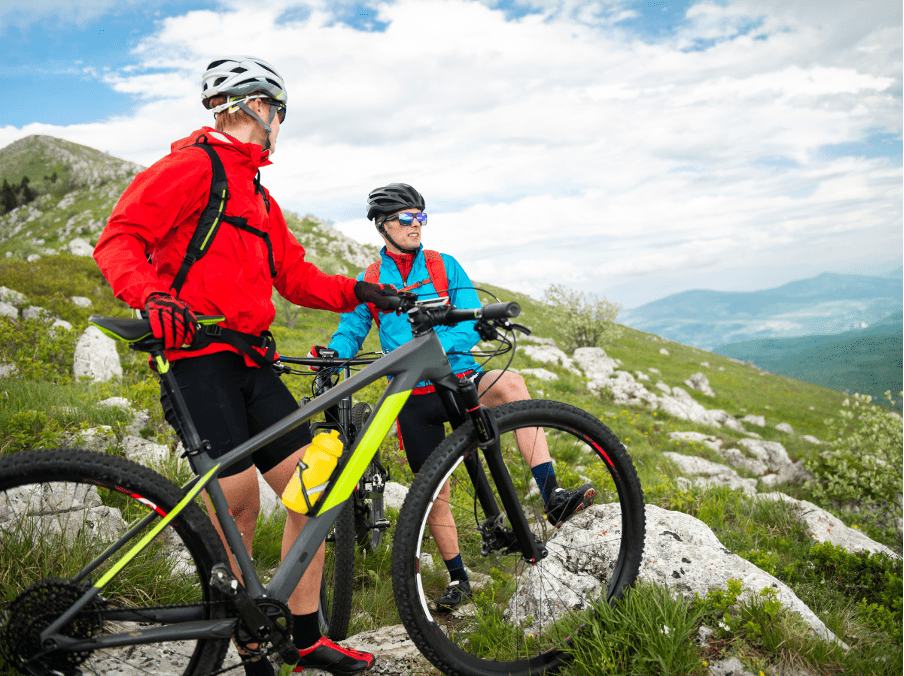
Mountain biking is a perfect activity that combines physical fitness, mental stimulation, and social interaction. Moreover, mountain bikers appreciate the freedom to explore nature while exercising and having fun after each ride.
According to the experts from a liquor store in Avon, mountain biking allows you to experience breathtaking scenery, the thrill of speed, the wind in your face, and the excitement of quenching your thirst with a bottle of beer after a successful ride.
It may appear overwhelming if you’re just getting started, but don’t worry too much since a hardtail mountain bike is designed for the rough terrains. There are many types of trails, and each one presents a unique set of challenges. That said, regardless of the type of trail you intend to ride, the following mountain biking tips for newbies should help you get off on the right foot. Always remember that riding becomes easier as you gain more experience.
Essential Protective Gears for Mountain Biking
You do not need to purchase every piece of top-tier mountain biking equipment, but there are a few essentials you must have. These include:
Helmet
You must purchase a mountain bike helmet when biking off-road. These helmets are designed to provide greater protection in the event of a collision by covering a larger portion of the head.
Mountain Bike Footwear
Having the right footwear can significantly change your experience. You’ll be surprised how much traction you have once you use a pair of mountain bike shoes; you’ll feel as though you’re glued to it!
Mountain Bike Shorts
Mountain bike shorts were made comfortable and flexible without being too baggy. They’re also made of a thicker material that can withstand rough terrain.
Knee Pads
The second most critical item of protective equipment is knee pads. They will protect you from grazes, hard knee impacts, and the dreaded (but unavoidable) pedal strike.
Bike Setup Factors To Consider
Aside from purchasing the finest mountain bike for newbies, several other factors, such as your height, weight, and riding style, might influence your ride. Here’s a checklist of items to think about before configuring your bike.
1. The Position and Height of the Saddle
The proper saddle height is one of the most crucial mountain riding fundamentals. For a more precise measurement, you can pay for a bike fit, although it’s easy to estimate on your own. Remember that you should not have to reach the bottom of the pedal stroke or be in an uncomfortable squat position.
2. Tire Inflation Pressure
Too much or too little tire pressure might ruin your journey. Too much will make it difficult to obtain traction, while too little will cause your tires to fold and your rims to collide with roots and rocks.
3. Suspension
It’s also important to be mindful of your fork and shocks. The first step is to check the air pressure and sag, depending on how much the rider weighs. Also, remember that the suspension will have both rebound and compression settings.
4. Ease of Maintenance
It is vital to keep your bike clean and in working order. Even if your bike does not appear dirty, cleaning crucial components such as the gears, suspension, and dropper post seals is important.
Mountain Biking Tips
Position your body correctly.
Even if you purchase the most expensive mountain bike for beginners, it will only be useful if you use the proper basic position. Position the pedals horizontally with the balls of your feet in front of the pedal axis. Then, keep your knees and arms slightly bent to absorb bumps and shocks from uneven terrain.
Maintain a forward focus.
When you first start mountain biking, one of the most common mistakes is to gaze down rather than straight ahead. However, when it comes to mountain biking, foresight is half the battle. If you’re serious about learning how to ride a mountain bike, you’ll need to know how to avoid falling by keeping your vision ahead.
Get off the saddle.
Even though staying in the seat appears relatively comfortable at first, it may lead to falls, particularly when riding downhill. This occurs because you are not using your legs when in the saddle. Remember that stepping out of the saddle not only helps you absorb strikes better but also helps you shift your weight more effectively.
Use your brakes effectively.
Braking is complicated, and gaining a feel for the proper braking force requires practice. Always remember to place one finger on each brake so that you may simultaneously apply the appropriate amount of force to both brakes. Distribute your weight evenly over both wheels to ensure that neither wheel locks.
Key Takeaway
If you want to move forward in life, you have to be consistent in whatever you do. Maintaining a consistent routine makes it easier for you to remember these mountain biking tips, but it will also teach you the most important skill, “Experience.” Take into account all of the vital information and pointers provided above so you can have a pleasant and risk-free ride.
Hey welcome to my blog . I am a modern women who love to share any tips on lifestyle, health, travel. Hope you join me in this journey!

Speak Your Mind